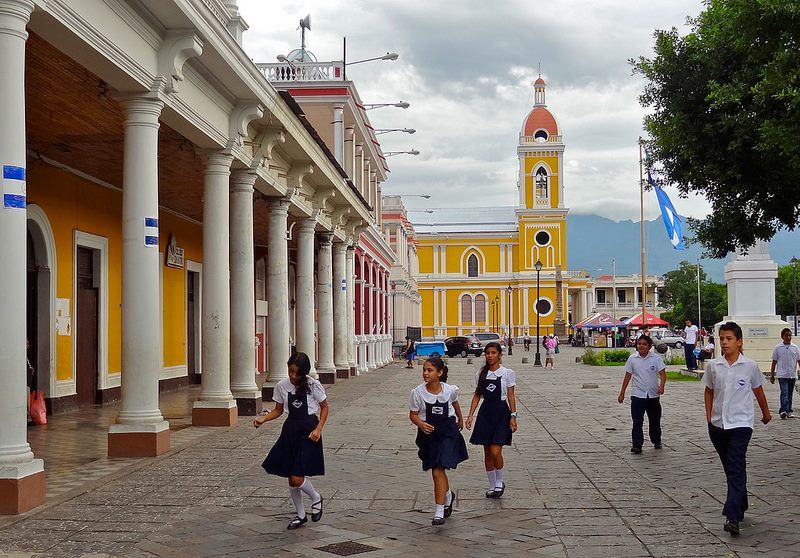Nicaragua, a well-kept secret of Central America
When I open the dark brown terrace doors to my balcony, I see the yellow-coloured tower of the cathedral on the other side of Granada's central square. Despite the early hour, the sun is already high in the sky. The birds in the trees are twittering and outside there is a contagious activity. The days in the colonial city of Granada start early, long before the tropical heat around noon covers and cripples life like a thick blanket for a few hours. I am in Nicaragua, one of the best kept secrets of Central America.
Nicaragua in a nutshell
Nicaragua is more than three times larger than the Netherlands, but less than 7 million people live there. The country has both a Pacific and a Caribbean coast, borders Costa Rica in the south and El Salvador and Honduras are its neighbours in the north. The interior consists of mountains, volcanoes and two enormous lakes. The country is very green, has paradisiacal beaches and breathtakingly beautiful historic cities, where time seems to have stood still. In addition, the tourist infrastructure has improved enormously over the past decade. For example, there are now numerous small-scale luxury accommodations, where you will be pampered to the fullest and where you can enjoy the wonderful surroundings to the fullest.
Colonial pearl Granada
My journey started in Granada, the oldest city in Central America. The city was founded in 1524 and is considered one of the most beautiful cities in Latin America. The colonial heart is perfectly preserved, but rather breathes the atmosphere of a small provincial town. I am staying in Plaza Colon, an attractive boutique hotel, located in a historic mansion, right on the square. In the shade of the trees, the inhabitants of the town seek out the relative coolness while chatting about their daily worries. Behind the cathedral is a pedestrian area with restaurants, bars and many terraces. This is where life only really gets going once the sun has set behind the horizon and the scorching heat of the day has given way to a sultry evening breeze. Granada is easy to explore on foot.
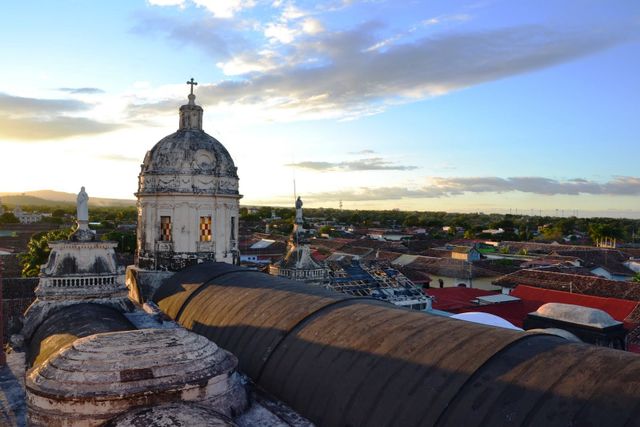


Lake Nicaragua
The city is located on Lake Nicaragua. Via the Passeo de los Mangos I reach the shore of the lake, which actually looks more like an enormous inland sea. The surface area is about as big as the provinces of Noord-Brabant and Zeeland together and is after Lake Titicaca on the border of Bolivia and Peru, the largest lake in Latin America. In the lake there are many volcanic islands that were created when an eruption occurred about 20,000 years ago, the top of the Mombacho volcano was blown away and the debris ended up in the lake. The islands are overgrown with tropical rainforest. Some of the islands are inhabited and small-scale hotels are now established on some of them.

Spending the night on a private island
I take a boat up the lake and sail to the Jicaro lodge. This small hotel is situated on a private island about 10 minutes sailing from Granada, yet the hustle and bustle of the city seems infinitely far away. What a pleasant surprise Jicaro is. Want to know more? Read it here.
Ometepe Island
The next day I return to the mainland and drive to Rivas. By the way, it is lovely to drive yourself in Nicaragua. The roads are good, it is safe, and the distances are not so great. At Rivas I take the ferry to Ometepe. Ometepe is a large island in Lake Nicaragua, which is formed by two volcanic peaks, the Concepción and the Maderas. Ometepe is an island with a lot of folklore and festivals. What strikes me is that many inhabitants do not ride horses, but cattle.
There is plenty to do in the area for everyone who wants to be active. There are good walk possibilities over the lushly overgrown volcano slopes. You can visit the 120-meter-high San Ramon waterfall or take a look in the villages on the island. I take a walk on the Santo Domingo beach and take a look at Ojo de Agua, a water source with crystal clear water in the middle of the island.
A nice place to spend the night is the Totoco ecolodge on the mountainside of the Maderas volcano from where it overlooks the island and the Concepcíon volcano. In the lodge the aim is to do as little damage as possible to the environment. That is why they only use solar energy here and the guesthouses are equipped with compost toilets. The fruit and vegetables come from their own garden and most of the employees come from the surrounding communities.
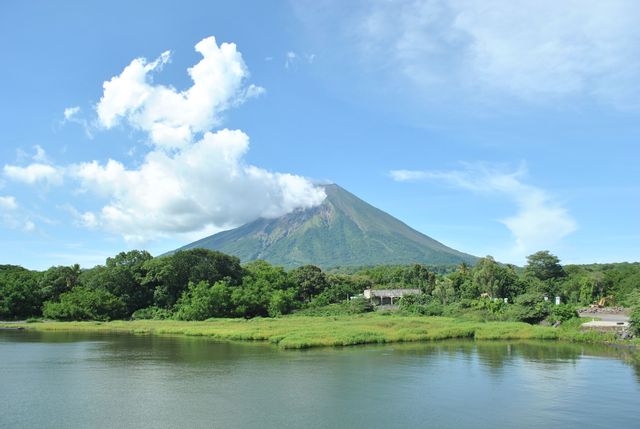
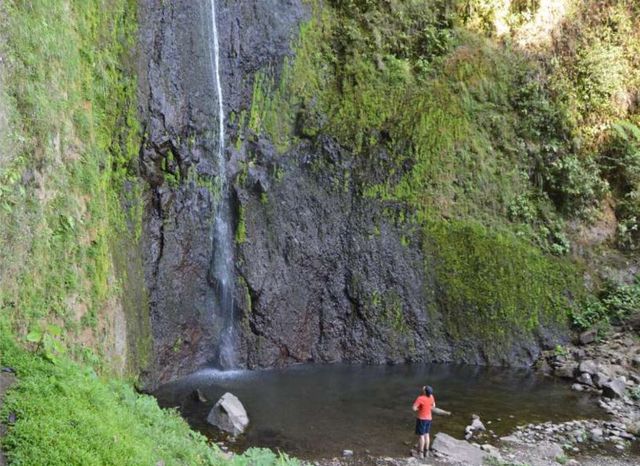
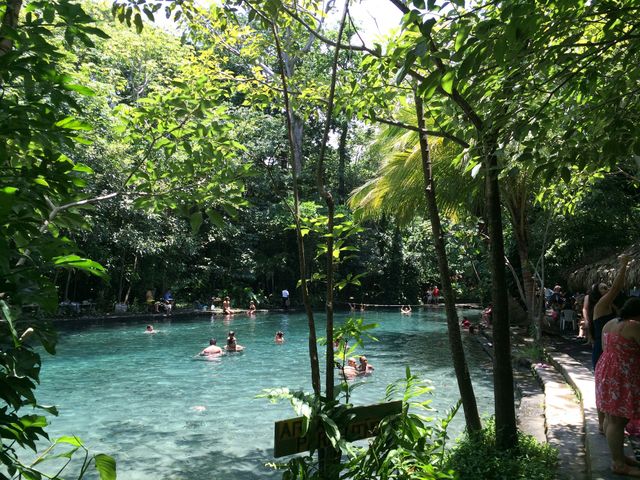
Surfers paradise
The Pacific coast consists of picturesque bays surrounded by dry forest, a flora and fauna typical of large parts of the Central American west coast. The west coast of Nicaragua is also one of the best places in the world for surfing. The village of San Juan del Sur therefore attracts surfers from all over the world.
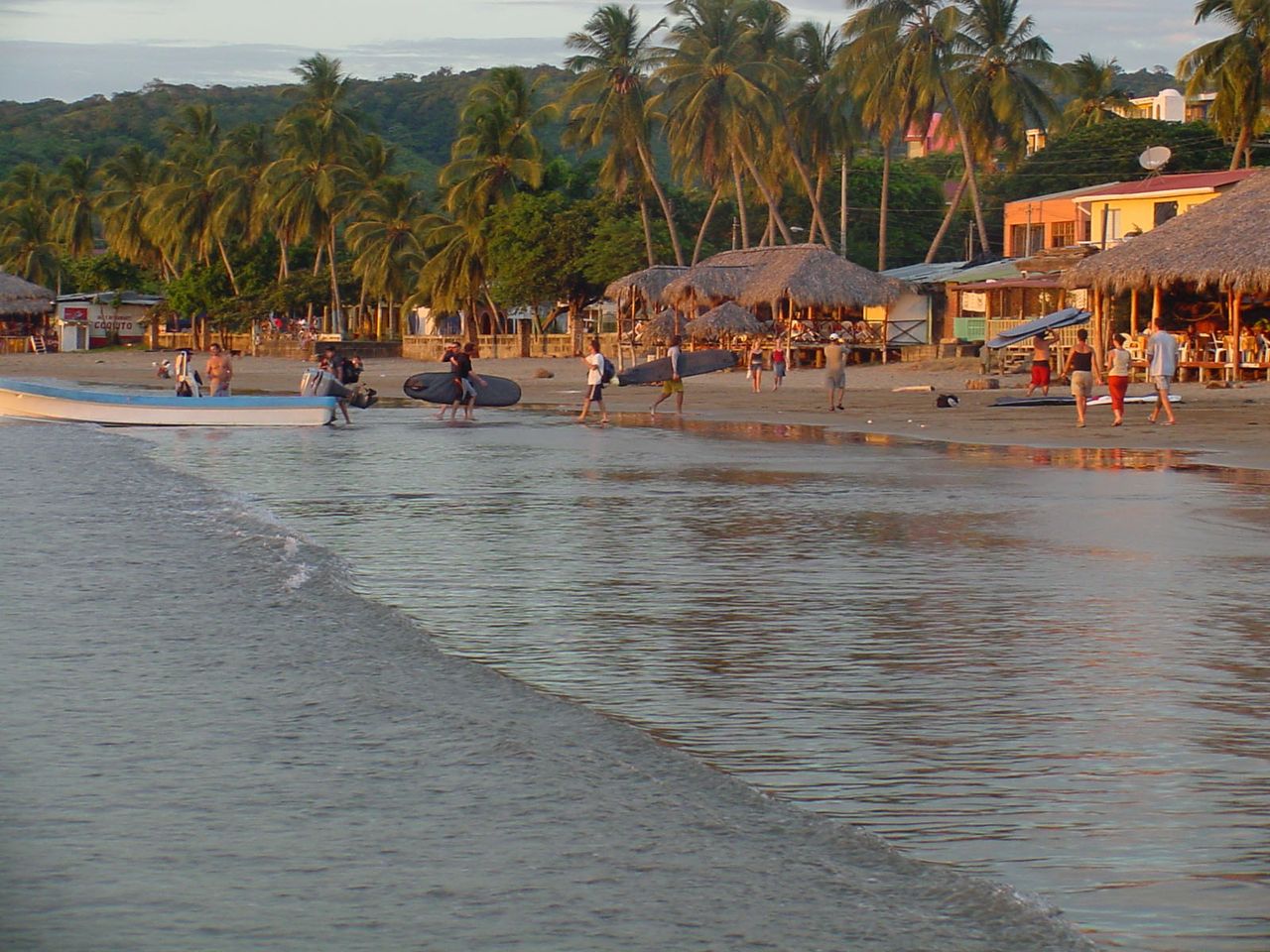
Morgan's rock
Just south of this town I am staying at a very special place, Morgan's Rock. I think it is a wonderful place. I take a long walk on the beach, where I don't meet anyone. In the distance I hear the loud cry of some howler monkeys. I dive into one of the hammocks hanging between the palm trees and in the bar, I order a cold Toña, the local beer of Nicaragua. To know more about Morgan's Rock, read it here.
The colourful market of Masaya
From Morgan's Rock I travel to Leon, a historic university town in the northwest of the country, stopping at Masaya on the way. Masaya is both the name of a volcano and of a city. The Masaya volcano is still very active, and you can see it up close. In the city of Masaya, I visit the local market. This is a true explosion of smells, colours and activity. I think everything is for sale here. A walk over the market is a must. I travel further north, where the road winds through a green landscape, while I have alternating views of Lake Xolotlán, popularly called Lake Managua, and views of the Pacific Ocean.

University city of León
Arrived in León, I am staying at El Convento. As the name suggests, the accommodation is located in a former monastery, located in the historic centre of the city. León was founded at the beginning of the sixteenth century and was initially 30 kilometres away. There, the city was so often hit by eruptions of the Momotombo volcano that it was decided to relocate in the early seventeenth century. The ruins of the old city, better known as León Viejo (Old Leon), are listed as a World Heritage Site by UNESCO. The historic centre of the 'new' León is well preserved. This centre is also home to the oldest university in Nicaragua. León is a real student city and that makes it a lively city.
In the afternoon when temperatures have dropped a bit, the city centre comes alive and the terraces fill up. I stroll leisurely through the colourful, picturesque streets. Live music can be heard from the many bars. Groups of students come together and chat a hundred times, while a few elderly people watch the young people from a bench in peace and quiet. The atmosphere in León is relaxed.
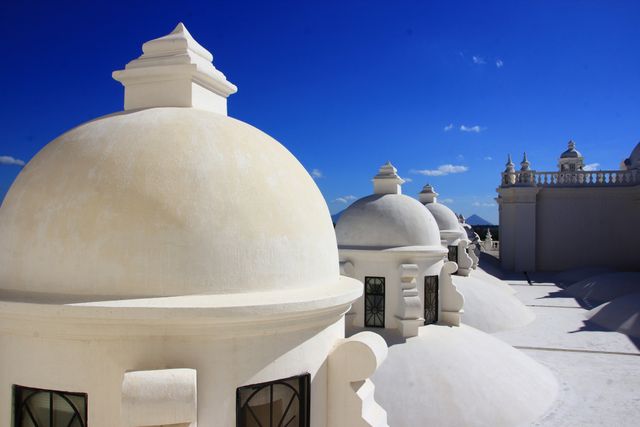

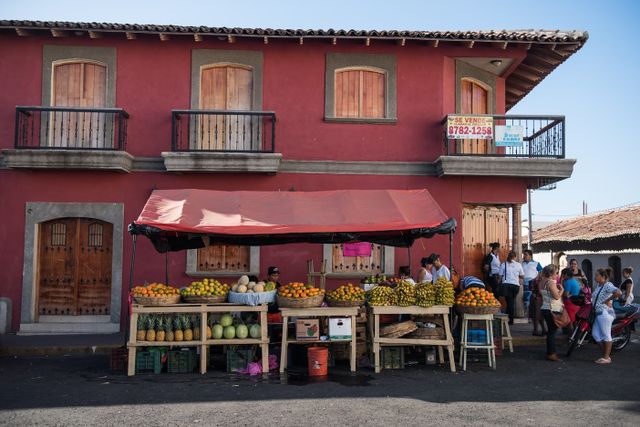
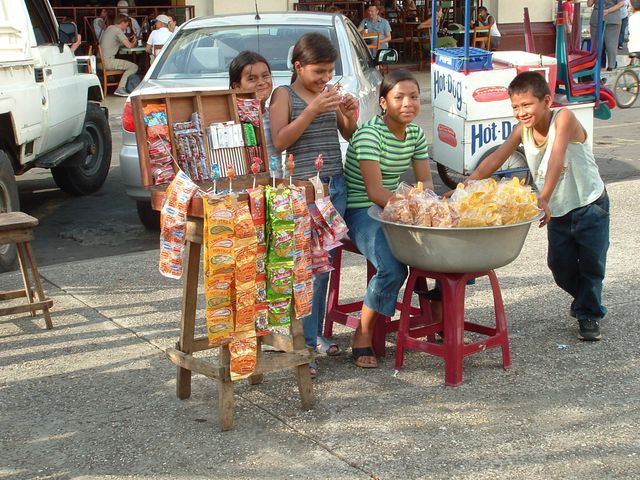
Sandboarding the volcano
León is surrounded by volcanoes and I decide to climb the summit of the Cerro Negro volcano covered in black lava. In the early morning we drive through a dense and hilly landscape. After half an hour's drive we reach the foot of the volcano and start our climb. It is a steep climb that starts in a green landscape until we reach black lava, from which the volcano owes its name. From the top I look out over the wide surroundings. I see a vast green hilly landscape, in which I also discover other volcano peaks. We brought a surfboard, because this is the quickest and most spectacular way to leave the volcano top again. With this surfboard I rock down again and drive back to León.
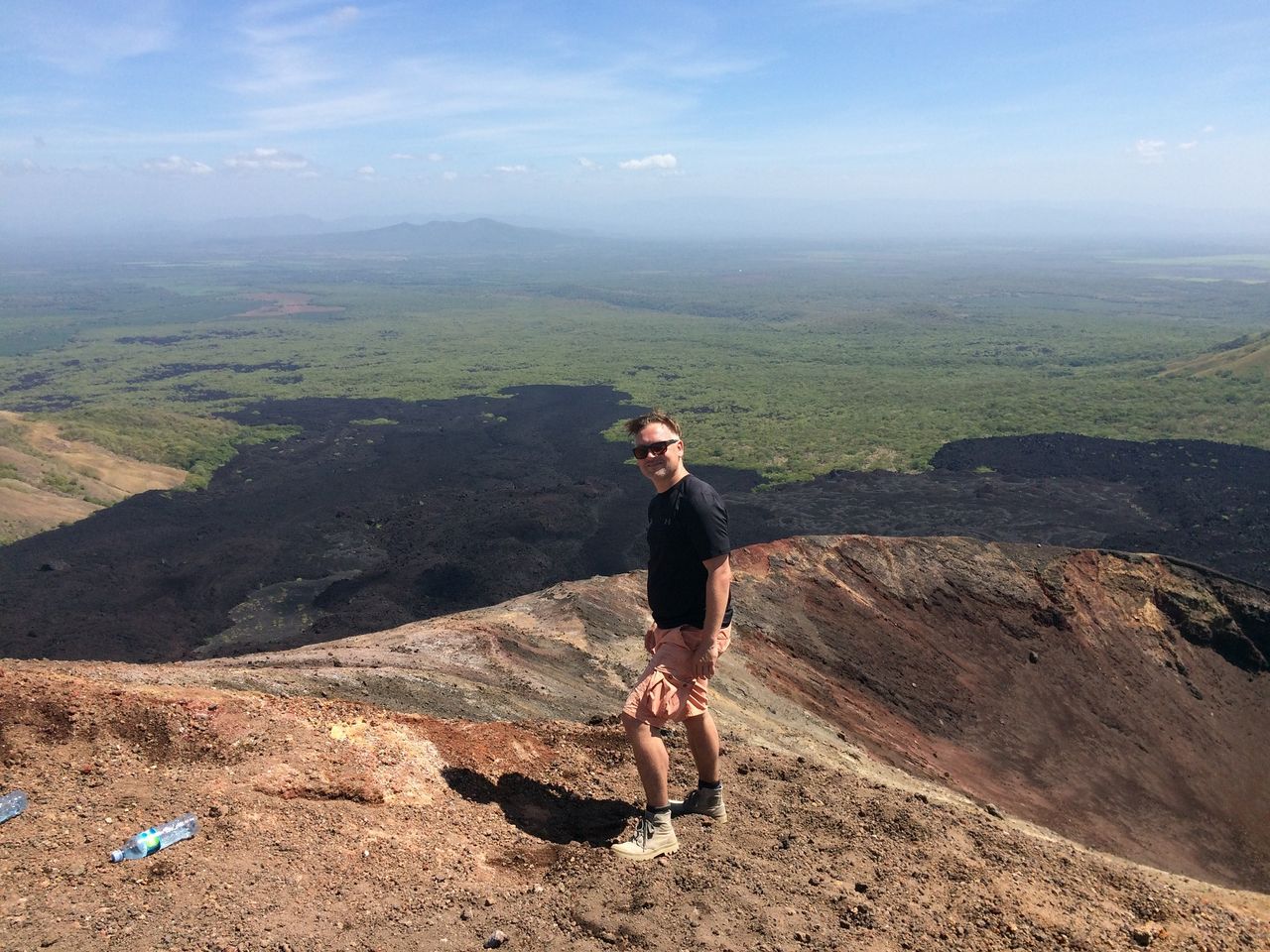

Over the water to El Salvador
After my days in León, I leave Nicaragua and travel on to El Salvador. These two countries do not share a land border, so I cross the water via the Gulf of Fonseca. In the hamlet of Potosi, at the foot of the Consiguina volcano, I pick up a kind of stamped element in a building shed annex customs office to leave Nicaragua. Then I board a fast motorboat with a few other people, and we set off. The trip takes about 2 hours and is beautiful. We pass some tropical, uninhabited islands, with idyllic beaches. The waters are rich in food and this is noticeable by the many birds that fly here. Unfortunately, I do not have the luck to spot dolphins, they seem to live here. On the horizon I see majestic, green mountain peaks in Honduras. It is a wonderful way to say goodbye to the enchantingly beautiful Nicaragua, a hidden pearl that seems to beckon to be discovered by more travellers. More about El Salvador.
More about Nicaragua
Nicaragua is one of the best-kept secrets of Central America. Read more about Nicaragua on our website and get inspired. Are you interested in travelling through this special country? Feel free to contact us. We will be happy to help you work out an unforgettable and unique journey. Send an e-mail to info@sapapanatravel.nl or call us on +31 73 610 62 04. We are happy to help.
